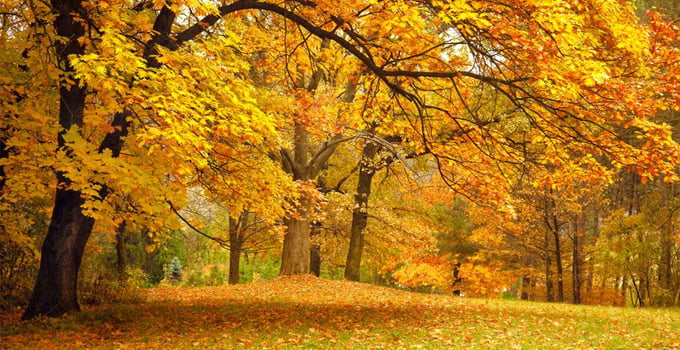Fall is the time you can kick back, watch some football, and not worry about your lawn, right? Wrong!
Fall is the perfect time to prepare your lawn for an easier spring. These simple projects can keep your lawn healthy during winter and provide for a healthier lawn in the spring.
To Bag or Not?
Leaves change to the pretty colors of Autumn, then they fall from the trees creating a blanket over your lawn, leaving you wondering what you to do with all those leaves?
The thick leaves covering your yard after the first initial leaf fall can smoother your lawn blocking sunlight, air, and nutrients that are essential for growth. It is recommended that you either bag, dispose of, or composite the initial leaf fall.
After the first leaf fall, you can use your lawn mower to mulch the remaining leaves, or you can get rid of those leaves as well. Mulching the leaves will provide nutrients to your lawn that it needs to continue growing until winter. The choice is yours!
Do you have Thatch or Compacted Soil?
You’ve spent the summer watching your kids play in yard, hosting summer BBQ’s, and mowing your lawn every week. All of these factors contribute to thatch or compacted soil that can block the nutrients from being dissolved into the soil.
Test your lawn for thatch by simply giving a small area a light rake, then taking a closer look. If there’s a lot of moss, grass, and weeds that weren’t visible before, you have thatch! Another way to test for thatch is to take a sturdy knife, cut a wedge out of your lawn, and examine the area in between the soil and where the grass starts. Then, of course, replace the wedge by stomping it back into your yard.
If water is lying in puddles on your lawn after it rains, or after you water it, your soil might be compacted. Compacted soil can stop water from being dissolved, depriving your lawn of the nutrients in needs to grow.
If you have thatch or compacted soil, aerating and dethatching is best done in the fall while the cooler temperatures allow your grass to soak up water and nutrients to continue to grow until winter, giving you a lush, green lawn come spring.
Reseeding
Do you have patchy areas in your lawn or do you want fuller grass? Even if you don’t have patchy areas, over-seeding can improve the look and health of your lawn to give you a lush, full lawn in the spring. Fall is the perfect time to over-seed to give the grass time to grow in the cooler temperatures and promotes stronger root growth. It is best to dethatch and/or aerate your lawn before you seed.
Feed Your Lawn
After a long, harsh summer of drought-induced dormancy, heat, and blazing sun your lawn could use an additional boost to store and use during the winter months of dormancy. Give your lawn a strong base to thrive on until next spring by doing a fall fertilizer. While collecting all of the nutrients and water to survive over the winter, fertilizer can strengthen grass for the upcoming spring.
Final Mow
Mowing can continue until Thanksgiving in some areas. As long as you keep a well-maintained lawn, that follows the 1/3 rule, there’s no need to cut it any shorter for the winter season. Maintaining the right length can ward off disease and insect attacks and allow your grass room to grow in the spring.
These simple fall lawn care projects can prepare your lawn for the winter months, leave you with a fuller, lush lawn with less work to do in the spring.
And don’t forget to carve a pumpkin for your porch!
